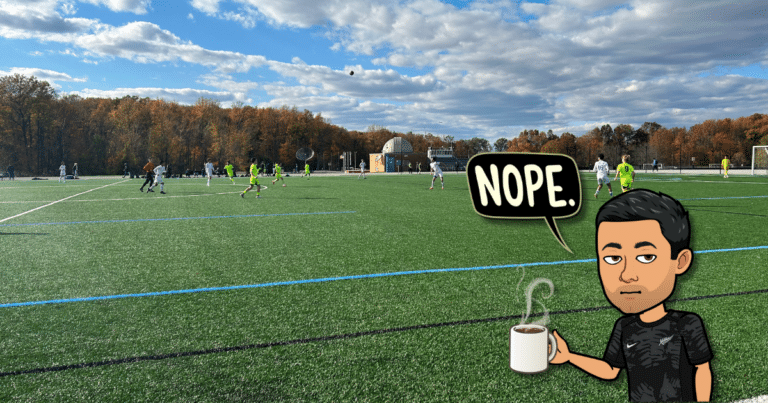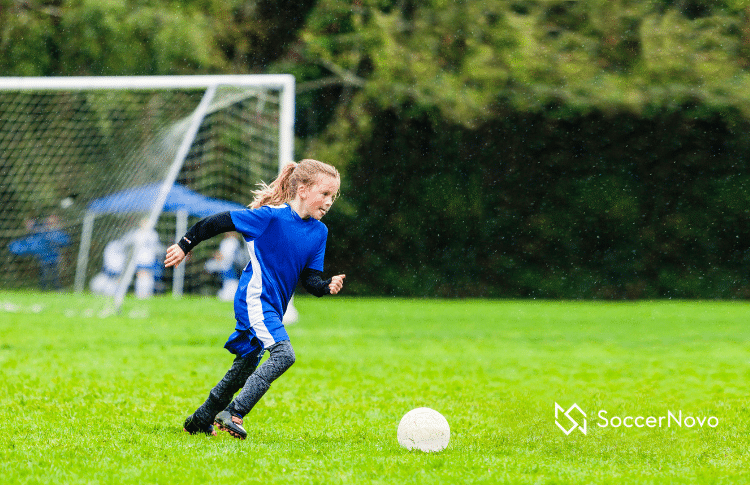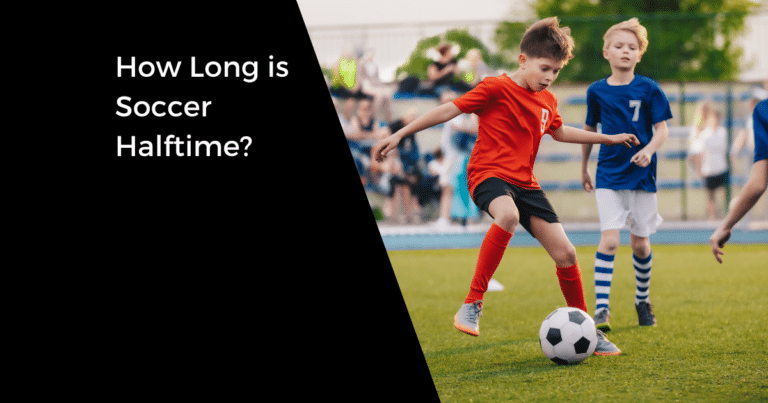The “Late Bloomer” Myth in Youth Soccer

If your child isn’t the biggest, fastest, or most dominant player at age 13, that’s not just okay — it might actually set them up for long-term success.
TL;DR:
Why Everyone Thinks Late Bloomers Are Doomed
Here’s the uncomfortable truth about youth soccer in America: we love picking winners early. Really early.
Being in the soccer space for the last 10 years, I’ve seen it happen many times over.
When a 12-year-old kid hits their growth spurt before everyone else, they suddenly look like a superstar. They’re bigger, stronger, and faster than their teammates. They score goals easily. Coaches notice. Scouts take notes. That player gets invited to MLS Academy trials, USYNT Talent IDs, and so on.
Meanwhile, the smaller kid — the one with great footwork and smart positioning — often gets left behind.
This isn’t because coaches are bad at their jobs. It’s because our soccer system values immediate results. Tournaments want winners. Clubs want trophies. Parents want their kid on the “best” team. So naturally, coaches pick the players who help them win right now. It’s not a knock on them.
The problem? That bigger kid might just be early to puberty. And the smaller kid? They might be on a completely different timeline — one that leads to success later on.
Early selection creates a snowball effect. The early developers get better coaching, tougher competition, and more confidence. The late developers sometimes get stuck on lower-level teams, lose motivation, or quit entirely. And youth soccer loses potentially great players before they ever get a real chance.
Your Kid’s Body Has Its Own Schedule (And That’s Normal)
Let’s talk about something most soccer parents don’t hear enough: physical development is wildly unpredictable.
Some boys hit their major growth spurt at 12 years old. Others don’t catch up until they’re 16 or 17. That’s a four or five-year gap where one kid might have a massive size and strength advantage over another — even though they’re the exact same age.
But here’s what really matters: physical size is temporary. Technical skill and soccer intelligence last forever.
Research shows that kids who develop later often have to rely more on creativity, positioning, and problem-solving because they can’t just overpower opponents. They learn to think faster, move smarter, and read the game better. When their bodies do catch up, they already have those high-level skills built in.
Even brain development continues into the late teens. Decision-making, spatial awareness, and tactical understanding — all crucial for soccer — keep improving well past age 13 or 14.
Think about some of the best players in the world. Luka Modrić was considered too small and weak as a teenager. N’Golo Kanté was playing in the sixth tier of French soccer at age 19. Jamie Vardy was working in a factory and playing non-league soccer until he was 25 years old.
Were they “late bloomers”? Or did everyone else just give up on them too soon?
If you’re on the smaller side and are frustrated, don’t give up. Keep reading…
What Late Developers Actually Get Better At
When you’re not the biggest or fastest kid on the field, you have to get good at other things. And those “other things” often matter more in the long run.
- Technical skills sharpen faster. Smaller players can’t just kick the ball past defenders and outrun them. They have to learn how to dribble in tight spaces, shield the ball, and make quick decisions under pressure. That’s high-level stuff — and it doesn’t disappear when they grow taller.
- Mental toughness becomes second nature. Getting overlooked, riding the bench, or playing on a lower-level team when you think you deserve better? That builds resilience. Late bloomers learn how to handle disappointment, stay motivated, and keep working when no one’s paying attention.
- Soccer IQ goes through the roof. When you can’t dominate physically, you have to outsmart people. Late developers learn better positioning, smarter passing angles, and how to find space without the ball. They understand why things work, not just how to do them.
- Long-term drive sticks around. Players who have everything handed to them early sometimes lose motivation later. But kids who had to fight for every opportunity? They develop a chip on their shoulder that fuels them for years.
These aren’t small advantages. These are the traits that separate good players from great ones at the highest levels.
What Parents and Coaches Should Actually Do
So if your kid isn’t starring on the top team right now, what’s the move?
- Be patient. Development isn’t a straight line. There will be plateaus. There will be setbacks. Your child might stay the same height for two years and then shoot up six inches in six months. That’s normal. Track progress over years, not months.
- Stop chasing the “best” team too early. A big-name club or elite league sounds impressive, but if your kid is sitting on the bench or getting destroyed by older, bigger players, they’re not actually developing. Playing time matters more than team status. Confidence matters more than a fancy logo on the jersey.
- Find environments that prioritize development over winning. Look for coaches who teach skills, encourage creativity, and give feedback that goes beyond “run faster” or “try harder.” Ask questions: What’s the training philosophy? How much playing time do all players get? How do you handle different development timelines?
- Talk to coaches about realistic goals. If your kid is 13 and smaller than their peers, don’t panic. Ask the coach what they’re seeing in terms of technical growth, soccer understanding, and effort. A good coach can identify potential even when physical tools aren’t there yet.
- Keep perspective. The goal isn’t to make the academy team at 14. The goal is to still be playing — and improving — at 17, 18, or beyond. That requires patience, opportunity, and the right mindset.
Real Players Who Proved Everyone Wrong
Sometimes it helps to remember that plenty of professional players were written off early.
- Jamie Vardy was released by Sheffield Wednesday FC as a teenager and ended up playing semi-professional soccer while working in a factory. He didn’t sign with a professional club until he was 25. By 28, he was breaking records in the English Premier League.
- Harry Kane was rejected by Arsenal as a kid. Watford didn’t keep him either. He bounced around on loan deals and didn’t become a regular starter for Tottenham until he was 21. Now he’s one of the best strikers in the world.
- Tyler Adams wasn’t the flashiest or most athletic kid in his age group. But he kept working, stayed consistent, and developed into a smart, reliable midfielder. Eventually, he became captain of the U.S. Men’s National Team.
The point isn’t that every late bloomer becomes a pro. The point is that development timelines vary — and giving up early guarantees you’ll never know what could have been.
Let’s Stop Calling Them “Late Bloomers”
Here’s the thing about the phrase “late bloomer”: it suggests someone is behind schedule. But whose schedule?
Soccer doesn’t have one universal timeline. Some players peak at 14. Some peak at 25. Some are ready for top competition at 16. Others need until 19 or 20 to fully develop.
The real problem isn’t kids developing late. The real problem is a youth soccer system that picks winners too early and doesn’t give players enough time to grow into their potential.
Development isn’t a race. It’s about steady improvement, resilience, and finding the right opportunities at the right time.
So if your kid isn’t dominating right now, don’t panic. Don’t force them to quit or switch sports just because they’re not the star at age 13. Keep training. Keep improving. Keep showing up.
Because the door doesn’t close at 14. It just opens later for some people.
And when it does, they’ll be ready!

Written By: SoccerNovo
SoccerNovo is an independent youth soccer media brand built to help parents, players, and coaches better understand the game and the pathways available in U.S. soccer. Our mission is to make youth soccer simpler, clearer, and more accessible for everyone involved in it.
Let’s connect






